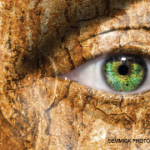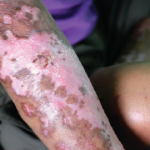BERLIN—Dealing with the symptoms of connective tissue disease is a traumatic experience for patients, but taking an assertive role in your own medical care is important if you want to get the best care, an expert said here at the European League Against Rheumatism (EULAR) 2012 Annual European Congress of Rheumatology, held June 6–9.
Alan Tyndall, MD, professor and head of the department of rheumatology at University Hospital in Basel, Switzerland, offered guidance for patients at a session on less-common disorders—a session that was geared toward a patient audience but that also offered useful insights for physicians.
Tightrope Between Fear and Assertiveness
“Don’t accept things that don’t seem right to you,” Dr. Tyndall said. “Don’t be lulled into simplistic explanations.”
Getting a second opinion is often a good idea, but too much information can become a problem. “Multiple opinions can be very confusing,” he said.
Throughout the talk, Dr. Tyndall related comments made from patients themselves. They ranged from the confusing period for an early lupus patient (“I thought the rash was some allergy, that the joint pains and difficulty concentrating were stress”), to apprehension over therapies (“I heard that biologics increase the risk of infection and cancer and don’t always work. I was too scared to try them”), to adapting to physical changes caused by dermatomyositis (“Instead of always thinking back about how I was, I suddenly realized that how I am is OK for the people who matter to me”).
Dr. Tyndall offered encouragement to those who might be at risk of despair. “All clinical symptoms are a spectrum of severity,” he said. “And early diagnosis really does control most patients.”
Keeping early track of symptoms can go a long way toward good long-term results, he said. “Your disease does not have to be completely cured,” he said. “It can just be controlled, and that’s enough. And we can do that with biologics.” But he also cautioned that not all biologics work for all patients, so a “structured and balanced” plan of therapy should be tailored for each patient.
Lupus
Kirsten Lerstrom—vice-chair of Lupus Europe, which oversees 23 national organizations—said lupus is such a multifaceted disease that the difficulty lies on both sides, in managing it and living with it.
SLE can be particularly difficult because of the timing—patients are often diagnosed in their mid-30s. “It’s at a time where you’ve finished your education and starting a career and you’re starting a family,” Lerstrom said. “And you can get hit with a disease that leaves half of the people, perhaps, out of work.”
The main symptoms—including pain, fatigue, and a feeling of stress—are not easily measured and can be difficult to describe to doctors, she said.
“It comes back to having the trust, creating the work relationship with your specialist,” she said. In the end, patients have to be their own best advocates, she said. “We have to be much better at understanding, and also presenting our diseases.”
Scleroderma
Ann Tyrrell Kennedy, president of the Federation of European Scleroderma Associations (FESCA), said a major problem with scleroderma, which often involves physical disfigurement, is self-stigmatization—a “corrosive” psychological hindrance in which patients distress over their body image and are convinced other people are always staring at them. This makes social interaction difficult.
The disease’s damage to the toes and fingers generates self-consciousness, she said. “The psychological effect can be more devastating than the physical effect,” Kennedy said. “This is rarely given enough attention by clinicians.”
A Canadian group has developed a way to assess scleroderma patients’ body image, with a tool called the Brief-Satisfaction with Appearance Scale (Brief-SWAP). Results of a study using this method found a pattern of self-stigmatization. “They show that people who evaluated themselves as disfigured stigmatized themselves, particularly women and the young,” Kennedy said.
She also noted that, while small changes to physical appearance through medical procedures might help a great deal with self-esteem, major overhauls, especially to the face, can lead to problems with self-identity.
Ankylosing Spondylitis
Cor van Drogen, a member of the executive committee of the Ankylosing Spondylitis International Federation, recalled the unpleasant experience of his own diagnosis. His general practitioner didn’t recognize the disease, then an acquaintance, also a doctor, said it might be ankylosing spondylitis (AS).
van Drogen asked his general practitioner for a blood test and an X-ray, only to be told that he didn’t have AS and that those steps were unnecessary. van Drogen insisted, and finally the diagnosis was made by a rheumatologist.
“From that moment, I had another general practitioner,” van Drogen said.
He stressed the value of getting involved with patient-advocate organizations. “The right attitude,” he said, “will help the patient to get along with the disease on an acceptable level.”
Thomas Collins is a freelance medical writer based in Florida.


